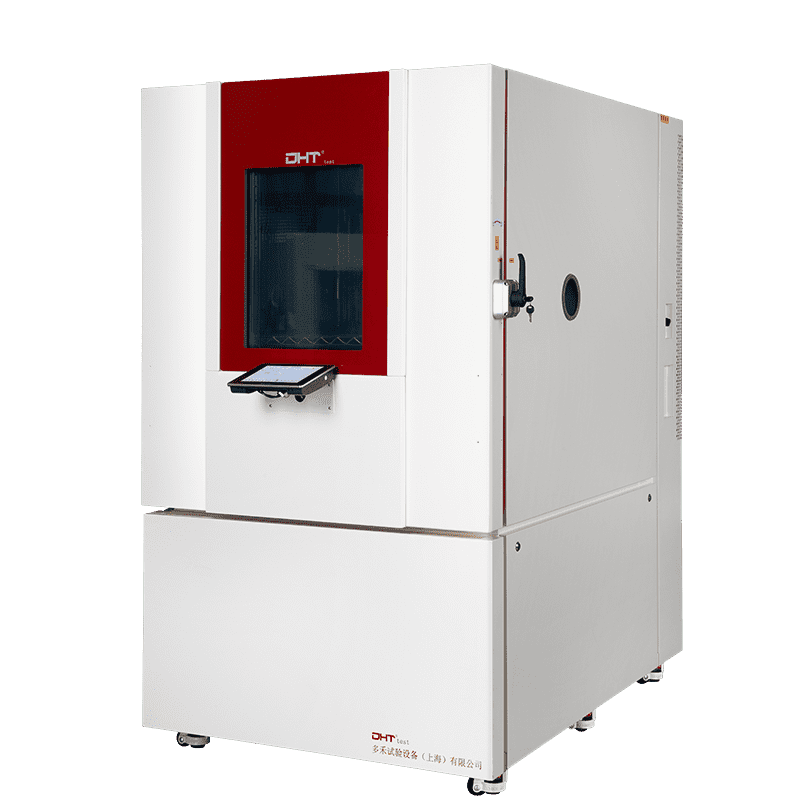Senior Engineer, Doaho Test (DHT®)
As the new energy industry advances toward 800V high-voltage platforms and the era of solid-state batteries, safety validation of battery systems is facing unprecedented challenges. Explosion-proof test chambers, as the core equipment for conducting high-risk tests (such as thermal runaway, overcharging, and nail penetration), play a decisive role in ensuring controlled testing boundaries and reliable data. In 2025, with accelerating product iterations and stricter safety standards, how can companies choose an explosion-proof chamber that truly meets testing requirements and safeguards baseline safety? This article provides a structured guide covering typical applications, key specifications, safety certifications, and selection trends.
Define the Testing Scenario: When Is an Explosion-Proof Chamber Required?
Not all battery tests require explosion-proof configurations. Only when a test involves a foreseeable risk of thermal runaway or combustion is explosion-proof protection mandatory. Typical high-risk test scenarios include:
-
Thermal Abuse Testing (>150°C): Triggers thermal runaway reactions with flames and venting;
-
Nail Penetration/Crush Testing: Causes internal short circuits after damaging separators, often leading to fire or ejection;
-
Overcharge/Overdischarge Testing: High-rate charging (2C–5C) causes rapid internal gas buildup and expansion;
-
Forced Internal Short Testing: Simulates extreme electrochemical failures, posing significant hazards;
-
Heated Testing with Live Battery/External Heat Source: Evaluates how external ignition sources affect battery safety.
It is recommended to refer to standards such as GB/T 31467.3, UN38.3, SAE J2464, and UL 2580. For the above scenarios, equipment with ATEX or equivalent explosion-proof certification should be used.
Core Technical Specifications: Five Key Parameters to Check Before Buying
-
Explosion-Resistant Structure Strength
The chamber should withstand an instantaneous pressure of ≥10 kPa (20 kPa recommended). A common structure includes SUS304 combined with Q235B, optimized via Finite Element Analysis (FEA) to ensure stress distribution. -
Pressure Relief System Response Time
High-quality chambers use rupture disc-type relief valves capable of depressurizing within 5 milliseconds, preventing deformation and secondary accidents. -
Inertization Control System
Integrates VOC gas sensors, thermal imaging, and a nitrogen system to rapidly inert the chamber atmosphere in the early stages of thermal events, effectively suppressing combustion. -
Automated Fire Suppression
Systems such as heptafluoropropane or dry powder can reduce oxygen concentration below ignition thresholds within 60 seconds, achieving closed-loop fire suppression. -
Multi-Channel Precision Data Acquisition
High-risk tests require ≥64-channel thermocouple modules with anti-interference design and data backup to ensure data integrity and traceability.
Safety Mechanisms and Compliance: Ensure Legal and Standardized Testing
-
ATEX Certification (for EU markets) or IECEx/UL explosion-proof markings (internationally accepted);
-
ISO 80079 Series Standards: Covering explosion-proof electrical structures, electrical safety, and flame-retardant material performance;
-
Data Protection Measures: Include isolation zones and password access controls to prevent data tampering or leakage.
Note: Some manufacturers falsely claim explosion-proof capability by using thickened panels or reinforced welding. Always verify third-party compliance certificates.
DHT® Differentiation and Selection Advice
For power battery enterprises in 2025, the following application needs are worth prioritizing:
-
High Energy Density Battery Production Lines: DHT®’s 180°C high-temperature mode can simulate extreme conditions for solid-state batteries;
-
Global Compliance Requirements: DHT® offers dual certification (CNEX + ATEX), meeting regulatory demands in both China and Europe;
-
Cost-Reduction and Efficiency Goals: Energy-optimized designs can reduce testing costs per GWh capacity by approximately CNY 150,000;
-
Long-Term R&D Projects: Modular systems support future upgrades to 200°C for ultra-high temperature testing.
According to third-party data from CNAS (Report No.: LAB-2024-BT001), DHT® explosion-proof systems achieved a 99.97% success rate in suppressing deflagration during thermal runaway simulation.
Conclusion
Battery safety is not just a technical issue—it reflects a company’s responsibility and brand credibility. Choosing a compliant, professional, and application-matched explosion-proof test chamber is a crucial step in every new energy enterprise’s process from validation to optimization and mass production. In 2025, it’s not just about passing the test—it’s about guarding the last line of defense in your laboratory.
If you are looking for a truly reliable solution for high-risk testing scenarios, contact DHT®. We offer end-to-end support, from selection consultation and custom design to after-sales service, helping you execute every critical test efficiently and safely.


